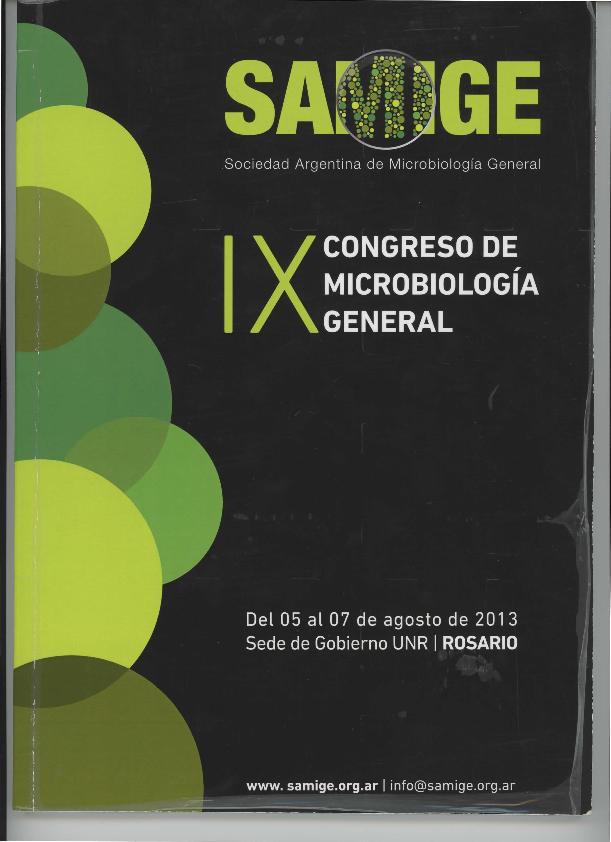Evento
Hydrolytic activity of microbial lipase aggregates induced by heat treatment
Tipo del evento:
Congreso
Nombre del evento:
IX Congreso de Microbiología General
Fecha del evento:
05/08/2013
Institución Organizadora:
Sociedad Argentina de Microbiología General;
Título del Libro:
IX Congreso de Microbiología General
Editorial:
Sociedad Argentina de Microbiología General
Idioma:
Inglés
Clasificación temática:
Resumen
Lipases (EC 3.1.1.3) are enzymes characterized by the ability to catalyze the hydrolysis of triglycerides at the interface between the insoluble substrate and water. Currently, lipases are a popular choice as a biocatalyst because they can be applied to chemo-, regio- and enantioselective hydrolyses and also in the syntheses of a broad range of compounds. These enzymes are considered to have great potential in numerous industrial processes, such as the synthesis of food ingredients, their use as additives to detergents and to obtain enantiopure drugs and other refined products. In addition, enzyme aggregates have emerged as an interesting biocatalyst design for immobilization. Generally, they can be produced by different protein precipitation techniques such as the addition of a salt or an organic solvent. In this work, the effect of lipase aggregation induced by heat treatment on its hydrolytic activity was evaluated. Sixty-four spore-forming microorganisms isolated from different oil contaminated soil samples were used. The most promising microorganisms were molecularly identified by using 16S partial rDNA sequencing. The extracellular lipase production was carried out by submerged fermentation in the Luria-Bertani (LB) medium. Hydrolytic activity of either supernatant or dried sample was measured using p-NPP (p-nitrophenyl palmitate; C16) as substrate. Cleavage of pNPP was performed at 37 °C in 100 mM phosphate buffer (pH 7.0) containing 0.1% (w/v) Arabic gum and 0.4% (w/v) Triton X-100 .The molar extinction coefficient of p-nitrophenol (p-NP) under the given assay conditions was 0.0103 μM−1cm−1. Dried supernatant was obtained by using a speed vacuum system (Savant Instruments, Inc) for 3 h at 45 ˚C. One unit of enzyme activity was defined as the amount of biocatalyst that released 1 µmol of p-NP per min. In general, it was found that the lipase aggregates induced by heat treatment showed higher hydrolytic activity than that the corresponding liquid supernatant. As an example, the hydrolytic activity of heat treated lipases from Brevibacillus brevis 47M, B. agri 49M, B. agri 52M and B. agri E12 was increased by 24.6, 454.8, 314.9 and 10.5 %, respectively. To conclude, the hydrolytic activity of lipase aggregates from different spore-forming microorganisms has been presented showing an interesting biotechnological and industrial relevance.
Palabras clave:
SPORE FORMING MICROORGANISMS
,
LIPASE AGGREGATES
,
HYDROLYTIC ACTIVITY
Archivos asociados
Licencia
Identificadores
Colecciones
Eventos(PROIMI)
Eventos de PLANTA PILOTO DE PROC.IND.MICROBIOLOGICOS (I)
Eventos de PLANTA PILOTO DE PROC.IND.MICROBIOLOGICOS (I)
Citación
Hydrolytic activity of microbial lipase aggregates induced by heat treatment; IX Congreso de Microbiología General; Rosario; Argentina; 2013; 1-3
Compartir




